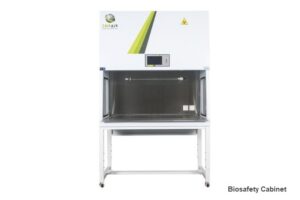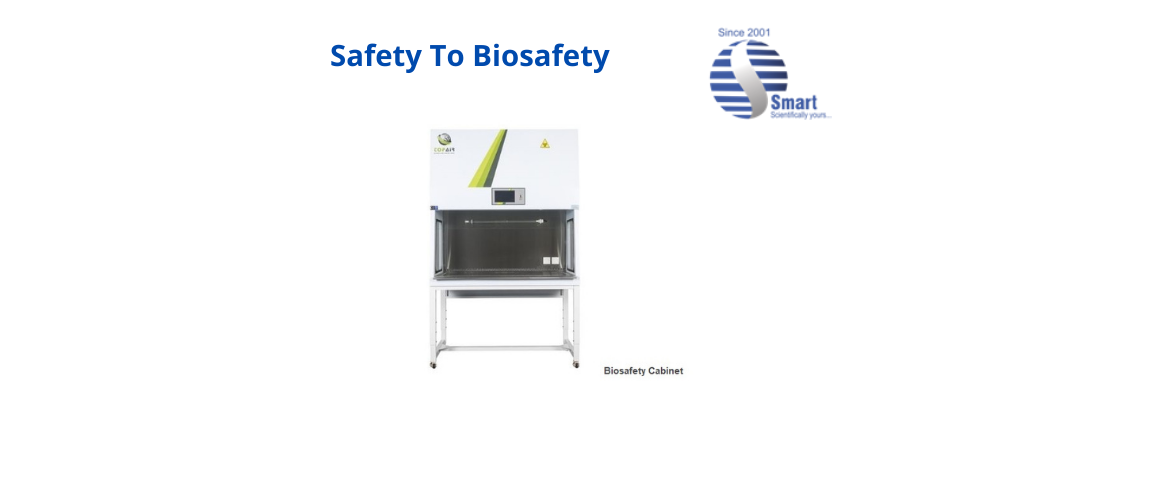Biosafety – topair systems
Safety is the most normally being used word these days by every creature at each and every level though it has been an essential parameter for the ages. Different Viruses such as SARS/COVID and the disease it causes are among mankind’s greatest enemies today. As a part of this battle, biosecurity is of vital importance, since it is responsible for preventing risks to health and to the environment from experience to biological agents that cause disease. The term BIOSAFETY has only just been known to the public till the virulent disease, now it has become more salient than ever to fight against the existing pandemic and to prevent biological Risk. Biosafety is a Framework that describes the use of specific practices, training, safety equipment, and specially designed buildings to protect the worker, community, and environment from accidental exposure or unintended release of infectious agents and toxins.

What is this Biosafety and why is it important? According to the World Health Organisation “biosafety is a strategic and integrated approach to analyzing and managing relevant risks to human, animal, and plant life health and associated risks for the environment.
The ultimate aim is to eliminate or minimize biological contamination. Conceptually, there are mainly three fields of biosecurity that stands before us:
- Biological Hazard: this is a potential risk of Uncontrolled exposure to biological agents that cause diseases such as toxins infectious to humans, animals, wildlife, or plants like parasites, viruses, bacteria, fungi, and biologically active materials. These biohazards not only cause disease in living organisms but makes significant damage to the environment too.
- Bio Containment: measures used to prevent infectious diseases from leaking from research Centres or other places where they may be produced.
- Bio-Protection: A set of measures taken to reduce the risk of loss, theft, misuse, or international release of pathogens and toxins, including those governing access to facilities, materials storage, and data and publication policies.
The research on Biohazards is very vital to understanding its infectious agents and toxins that cause diseases of public health and agricultural concern.
Biosafety is a strategic and integrated approach to analyzing and managing relevant risks to human, animal, and plant life health and associated risks for the environment.
Thus evolved the significance of identifying medical products and strategies to diagnose, treat and prevent a wide range of diseases, whether those diseases emerge naturally or are deliberately introduced into a population through an act of bioterrorism. These medical products are called Counter-Measures which include diagnostic tools, vaccines, antibodies, antivirals and anti-toxins, and also necessary protective equipment.
In order to continue medical countermeasure development, a nationwide system must be maintained to support Biological Research with Proper training to scientists and related staff.
Two important factors in the design of biosafety systems are containment and risk. Based on the pathogens, the World Health Organisation defines four safety levels for facilities that handle potentially hazardous microbes as BSL 1, BSL 2, BSL 3, and BSL 4 that describes the minimum safe work practices, specially designed buildings, and safety equipment required to conduct on Infectious agents, toxins and other biological hazards. BSL 4 is the highest biosafety level.
The risk Groups that are classified are as under
Risk Group 1: Organisms that are not associated with disease in healthy human
adults
Risk Group 2: Organisms that may cause mild disease for which Medical counter
measures are Available
Risk Group 3: Organisms that may cause serious or deadly diseases for which
medical countermeasures may be available and which have low potential to spread in the community environment.
Risk Group 4: Organisms that will cause serious or deadly disease for which medical
countermeasures are unlikely to be available, and which have high potential to spread In the community or environment
Biosafety is a complex discipline that is not devoid of dangers. That is why it is so crucial to have a set of rules and barriers to prevent biological hazards derived from exposure to infectious biological agents. Biosafety measures must be observed by everybody because each one is at risk of carrying pathogenic microorganisms. Also, the workers who handle potentially contaminated biological agents must be aware of the risks and master the practices and techniques required for the safety of their jobs. The elements used to contain biological contamination tend to be divided into two groups being immunization on one hand such as vaccines, safety cabinets, gloves, and masks as primary barriers and insulated work areas, hand washers, and ventilation systems as secondary Barriers on other hand.
The Bio-Safety Level assigned to a project is based on a biological risk assessment that takes into account. The nature of the infectious agent, toxin, or biological hazard including its:
- Ability to cause disease and the way in which it causes the disease; transmissibility and pathogenicity
- The infectious dose that is required to be identified to cause disease
- Different organisms that are susceptible to it and prevalence in the community
- The specific laboratory activity or activities being performed
- Availability of preventive medical countermeasures such as vaccines or effective treatment i.e. post-exposure vaccination and or use of antimicrobials, antivirals, and chemotherapeutic agents
With today’s pandemic, people appreciate the importance of Biosafety and recognize that it is not limited to laboratories alone but to every organization. Staff are encouraged to communicate without fear and are trained in such a way that they understand their specific roles to maintain the highest standards of safety by complying with regulations and guidelines.
Biocontainment refers to the use of safety equipment and specially designed rooms and buildings which act as primary barriers and secondary barriers to prevent the release of infectious agents, toxins, and other biological hazards in the environment.
Primary containment is designed to protect the people within the lab from exposure. This includes Biological Safety Cabinets, Fume Hoods, Enclosed Containers, and more personal protective equipment such as masks or gloves and hoods, etc.,
Secondary containment prevents biological hazards and pathogens from escaping from the lab and exposing outside. The design and architecture of the lab and building are crucial in this case. This includes ventilation systems, hand washing stations, airlocks, etc.
Necessary biosafety training and risk assessment are crucial for all laboratory personnel to optimize productivity and efficiency. This helps in following all-important protocols in handling infectious organisms and hazardous biological material. This not only keeps those working in the lab safe and also protects anyone else that comes in contact by transforming SAFETY TO BIOSAFETY and maintains GLOBAL Health SAFETY.

